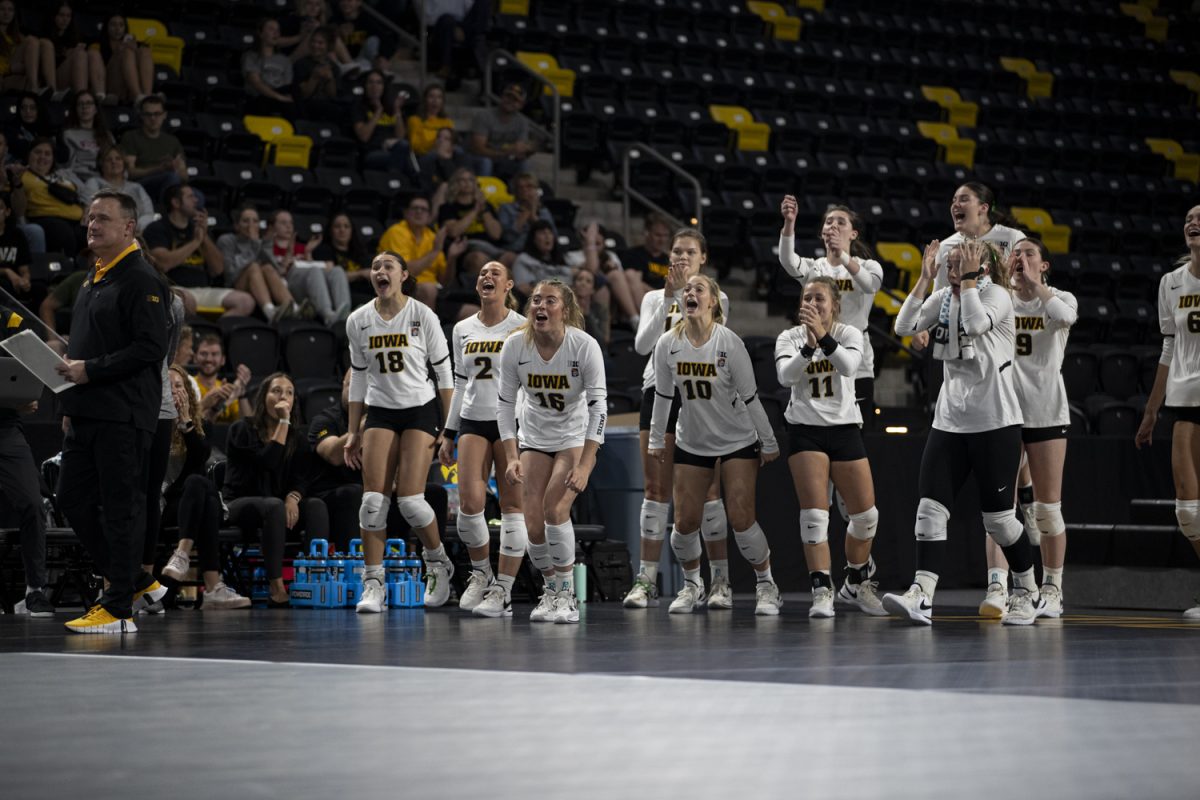While the Big Ten conference is already one of the most competitive collegiate sports conferences in the nation, it’s about to get even tougher next year.
The Big Ten will add four schools from the Pac-12 to its competitions in 2024 in UCLA, USC, Oregon, and Washington, it was announced over the summer — a move that expands the historic conference from 14 to 18 teams and only increases the need for each university to adapt to be able to compete.
While the conference alignment will have clear ramifications for football and basketball with the addition of such esteemed programs, the same effect will be felt on the volleyball court.
The four teams joining the Big Ten are already well-established in the NCAA volleyball realm.
While UCLA, USC, and Washington hold records well above .500 so far this season, the Oregon Ducks sit at an impressive 16-2 overall record and are ranked fifth in the nation.
Although the Ducks have yet to capture a national title, the Bruins have won eight national championships to the Trojans’ six and Huskies’ one in their respective programs’ histories.
These four will mix in and quickly compete with the Big Ten’s already-established volleyball powerhouses — five of the conference’s teams are currently ranked in the top 25 in the nation.
The Big Ten conference boasts the top two teams in the NCAA Division I rankings.
No. 1 Wisconsin and No. 2 Nebraska are the only two remaining undefeated teams in the nation, both with 17-0 records.
Behind the two teams sits No. 13 Penn State maintaining a 12-3 record, and No. 15 Purdue falls right behind the Nittany Lions at 10-5.
Minnesota ranks 24th despite its 6-8 record, and Ohio State has been in and out of the national rankings throughout the season.
But at the bottom of the Big Ten standings rests the Iowa women’s volleyball team.
The Hawkeyes started the season strongly, shooting out to an 8-4 record before Big Ten play. But since the commencement of Big Ten competition, the Hawkeyes have gone 0-8 in Big Ten play on an eight-game losing streak — and now sit dead last in the conference’s standings.
The Hawkeyes have fallen into a slump, losing to the Golden Gophers in three sets to two on Sept. 21 — their last match capturing a set win in nearly a month.
Iowa then lost in straight sets in its next six matches before finally breaking the drought upon capturing one set from Michigan State in a loss on Oct. 14.
Iowa head coach Jim Barnes knows the team has had a tough schedule so far this season, especially considering its matchups with such upper-echelon programs — five of the Hawkeyes’ opponents this season have been ranked.
“Our team has continued to fight and get better, and that’s all we can ask of them,” Barnes said. “We’re able to go toe-to-toe with these teams. [We’ve had] just a few mistakes that, if we correct them, we can be on the winning side of.”
But the Hawkeyes know there will be no nights off as their Big Ten schedule rambles on through the end of October and well into November.
The Hawkeyes will first rematch with the Nittany Lions in State College, Pennsylvania, on Oct. 20, looking to avenge their straight-sets loss to Penn State on Oct. 13.
Iowa will then get just under a month of Big Ten competition against nationally unranked opponents.
But those matchups will be crucial in terms of momentum as the Hawkeyes close out the season in late November with rematches with the Golden Gophers on Nov. 17 and Badgers on Nov. 25 in addition to a meeting with Nebraska in Iowa City on Nov. 19.
Evidently, the four Pac-12 additions from the West Coast next year will only make Iowa’s conference schedule tougher than it already is, adding to the need for the Hawkeyes to adjust and adapt to survive with the best of the best in NCAA volleyball in their very own conference.
Barnes sees the conference expansion as an opportunity to recruit even better players beyond the Midwest who want to play in an increasingly competitive conference.
“We’re going to be able to [grab the attention of] some of those players that were looking at us and a school outside the conference,” Barnes said. “It’s about bringing in better and better talent so we can compete. I’m extremely proud of the team we have right now because they’re building that culture.”
Barnes credits his coaching staff around him for its ability to bring in talented recruits — an ability that will be crucial to adding players who can boost the team in an even more contentious environment next season.
“We’ve got a great staff, and we do things the right way,” Barnes said. “We treat our players really well, so that always pays off. It always gets the most out of our players … so we’re proud of the way we handle things [in this program].”
But the pressure remains on the Hawkeyes to do more in this conference as its talent only increases and its culture shifts.
Upon anticipating the battles in store for the Black and Gold next year, Iowa third-year middle hitter and Tulane transfer Anna Davis is looking beyond the competition and into the culture of the Big Ten she feels these four teams can only add to.
“I think it was really cool coming into the Big Ten [from Tulane] and just seeing what it was like,” Davis said. “There’s a very set culture here, and these fans love their sports and love their school.
“Now, we’re bringing some other teams that are coming from a different conference in different cities and different cultures,” she added. “It’ll be cool to bring them into [the Big Ten] culture.”



